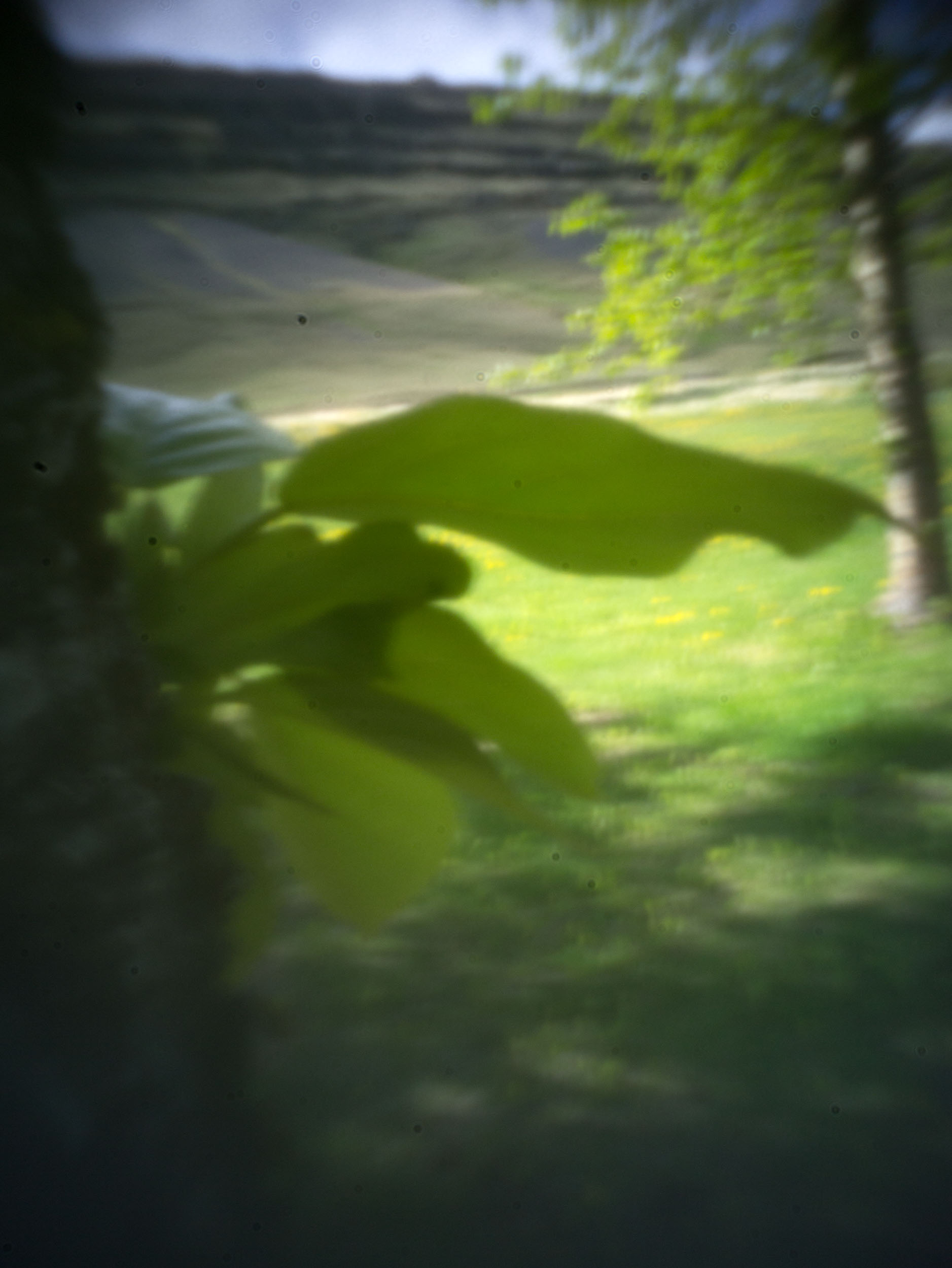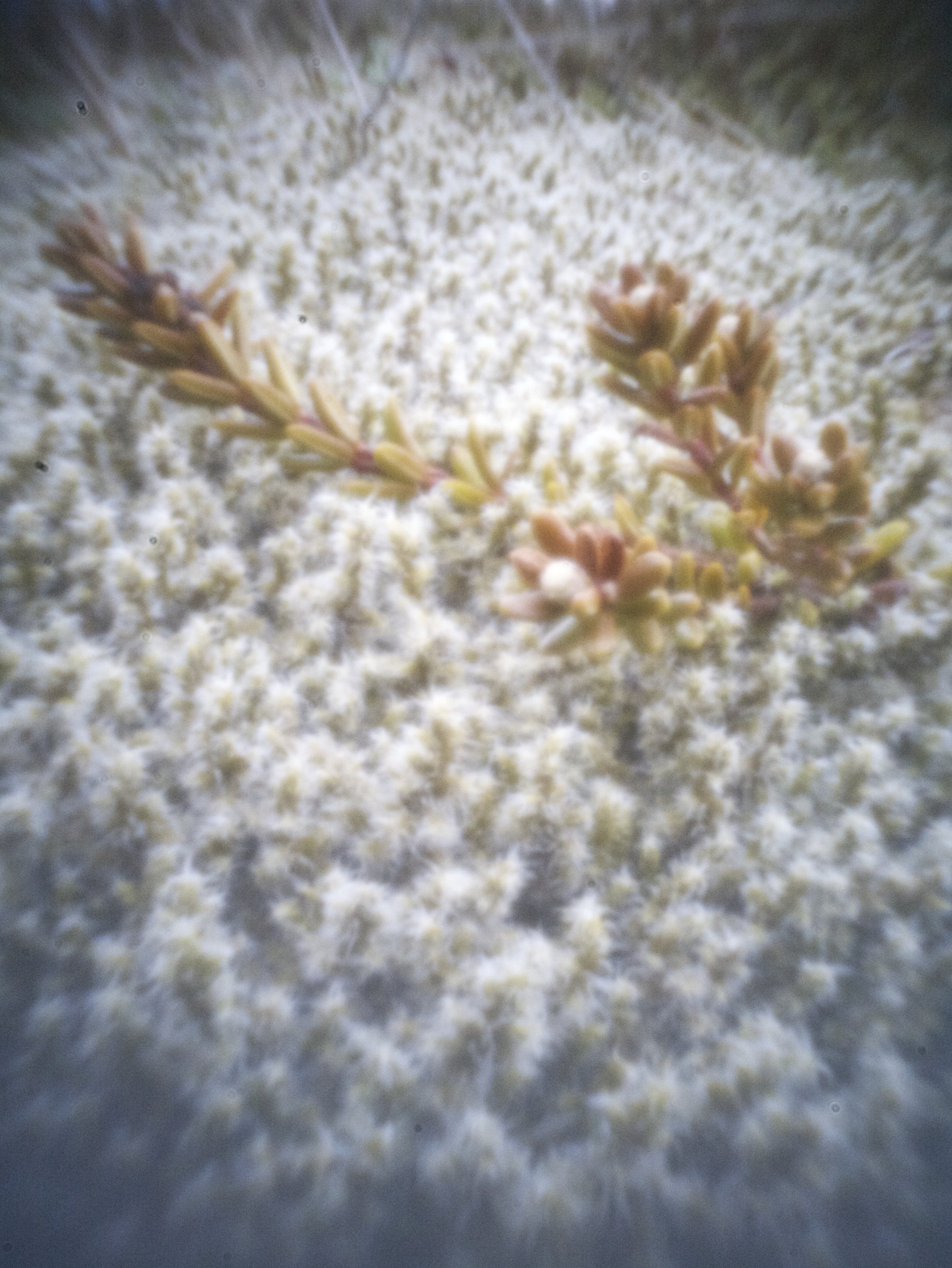In the belief that a tangibles expression of a plant’s emotions would bring about harmonious interaction between human beings and a plant kingdom, John Lifton built a device what he called green music — Walon Green, The Secret Life of Plants
The series Atlas of Iceland’s plant life with a pinhole camera (2015) explores, how we can learn the ability to identify with objects of the external world. Spyros Papapetros explores this question in his book on art, architecture, and the extension of life called On the Animation of the Inorganic. But plants are no objects.
Today observing is a common method in scientific research. But how can I explore nature and allow climate and coincidence to be part of the production process? What if any daily weather conditions like sun, rain, wind or even the biological cycle of the plant will affect the photographic image?
For this project, she tracked the local plants that grew in the subarctic Nordic-Alpine environment in May and June 2015. The sequence of photographs explored the field of time, documentation, and nature. For 2 months she experimented with a pinhole camera, simply used daylight and time exposure, and worked without any lenses.
Every exposure took its time and the process of taking a picture also became a period of deceleration in the local environment of Iceland. She photographed all the plants for this project during a working grant of Goethe Institute Denmark at Skaftfell Center for Visual Art. In the artist book by the rivers in the wetlands up in the mountains, which is available at the Skaftfell book store now, is a selection of about 100 images.
Thank You to:
Tinna Guðmunds, David Edward Allen, Nanna Bruun, Litten Nystrøm and Goethe Institut Denmark
Atlas of Iceland's plant life with a pinhole camera — Photographic research and environment, 2015, a series of around 100 pinhole photographs



































